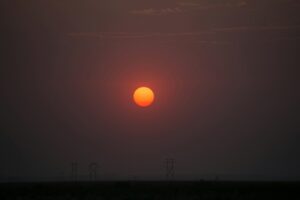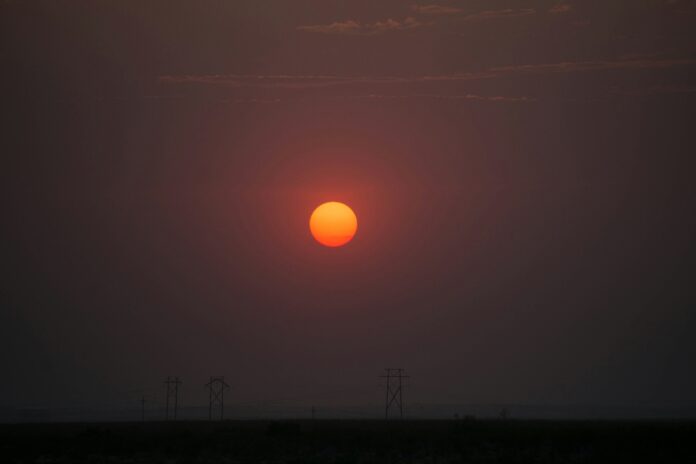The Sun is the lifeblood of our solar system, providing the energy and light necessary to sustain life on Earth. But what would happen if it suddenly went dark? The consequences would be catastrophic, and within a short period, Earth would transform from a thriving planet into an icy, lifeless wasteland. Here’s a deep dive into what would happen if our Sun suddenly stopped shining.
Immediate Effects: Darkness and Rapid Cooling
The moment the Sun stopped shining, Earth would plunge into complete darkness. Since light from the Sun takes about 8 minutes and 20 seconds to reach our planet, we’d have just that short time to witness the last sunlight. After that, the world would be bathed in complete darkness, and daytime as we know it would vanish.
The immediate loss of solar energy would lead to a rapid drop in temperatures. Within hours, the Earth’s surface would cool dramatically, with temperatures dropping below freezing in less than a week. Without the Sun’s heat, the average global temperature, currently around 57°F (14°C), would drop to 0°F (-18°C) within days. Within a year, it would plummet to an uninhabitable -100°F (-73°C).
The Breakdown of Ecosystems: End of Photosynthesis
One of the most significant effects would be the end of photosynthesis. Without sunlight, plants and algae would no longer be able to convert carbon dioxide into oxygen and glucose. This would trigger a domino effect across all ecosystems. Within days, plants would begin to wither and die, and shortly after, herbivores and other animals dependent on vegetation would face starvation.
The oceans, which absorb and store sunlight, would begin to freeze over within weeks. The surface of the seas would become covered with ice, cutting off oxygen and sunlight from marine life. While the deep ocean might stay warm for a time due to geothermal heat, the entire aquatic ecosystem would eventually collapse.
Atmospheric Changes: Freezing and Atmospheric Collapse
As temperatures continue to fall, the atmosphere itself would start to freeze. Oxygen, nitrogen, and carbon dioxide would turn into solid forms, creating layers of ice on the Earth’s surface. The atmosphere would become so thin that breathable air would become a thing of the past. Any remaining survivors would have to rely on artificial habitats with controlled air and heat.
Human Survival: Underground or Artificial Habitats
In such a dire scenario, survival would be nearly impossible on the Earth’s surface. However, with advanced technology, humans might find temporary refuge underground or in specially designed shelters. These habitats would need to rely on nuclear or geothermal energy for power and heat, as solar power would no longer be viable.
Food production would become an enormous challenge since crops depend on sunlight to grow. Survivors would have to rely on stored food supplies, hydroponics with artificial light, or even lab-grown alternatives. However, sustaining a large population for an extended period would be nearly impossible without access to fresh resources.
The Long-Term Fate of Earth: A Frozen, Drifting Rock
Over the following years and centuries, Earth would become an increasingly frozen and lifeless planet. The surface would resemble the icy moons of the outer solar system, such as Europa or Enceladus. Any heat remaining in the Earth’s core would dissipate, and the planet would eventually turn into a dark, frozen rock drifting through space.
The End of Life as We Know It
The Sun is not only our primary light source but also a fundamental driver of the energy and climate systems that sustain life on Earth. Without it, the planet would transform into a cold, dark, and lifeless wasteland. The grim reality is that without the Sun, life on Earth simply cannot survive. The complex balance that allows us to thrive is entirely dependent on this star at the center of our solar system.
While the idea of the Sun going out is a thought experiment—thankfully, our Sun is stable and will continue to shine for billions of years—this scenario is a reminder of how fragile life on Earth truly is and how much we rely on our environment to survive.

Photo by Ivan Calderon on Unsplash
Views: 3






